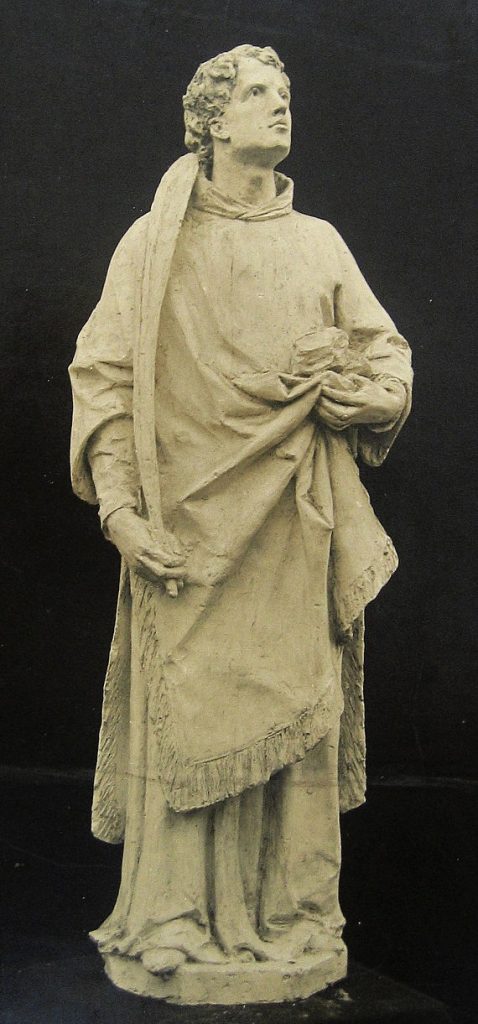St Stephen, Devonport

The church of St Stephen in Devonport was another victim of the Plymouth blitz and was gutted in 1941, though the shell remained standing until 1959 (lostplymouthchurches). It was thought to be one of the most beautiful churches in Plymouth and was of the Anglo-Catholic tradition. Sedding certainly carried out more work at St Stephen’s than is listed below, such as an alabaster and polyphant altar for the crypt (DRO 1626B/P/164), but it may or may not have been carved by the Pinwill company.
Rood Screen and Rood – Photograph (PWDRO 116/18 and 244/5) E.H. Sedding designer; 1904
The screen and rood were installed in the church in 1904 (Graham Naylor, pers. comm.) and were designed by Edmund H. Sedding (Western Morning News, 1921a).
Pillar Panelling and Figure of St Stephen – Photograph (PWDRO 116/18 and 244/5); 1911-1914
Sometime after the installation of the rood screen and rood, the stone pillar to the south was enclosed in elaborate panelling (PWDRO 244/5) to house a large figure of St Stephen (PWDRO 116/18). The figure is almost identical to a smaller one made later for Truro Cathedral. The panelling appears to have four further niches for additional figures. A disintegrating drawing of the panelling and figure exists at DHC (1626B/P/162), labelled as being the work of Sedding & Wheatly, which places it in the period 1911-1914 when this partnership was in place.
In July 2022, a visit by Graham Naylor to the post-war church of St James the Less at Ham revealed that this statue had been saved from the blitzed church of St Stephen and placed in the Lady Chapel (Graham Naylor, pers. comm.).
Sound Board – Photograph (PWDRO 244/5); after 1913
This photograph shows the pulpit below the sound board, but the annotation only notes the latter. The pulpit, which is quite a different style, was installed in 1913 (Graham Naylor, pers. comm.) and so the sound board is probably after that date. An inscription on the sound board could read ‘MCMXVII’ denoting 1917 but the image is too unclear to be sure.
Sources
DHC 1626B/P/162 Plans. Plymouth St Stephen. Panelling.
DHC 1626B/P/164 Plans. Plymouth St Stephen. Altar for Crypt.
PWDRO 116/18 Photographs. Plymouth St Stephen. Chancel Screen and Figure of St Stephen.
PWDRO 244/5 Photograph Album. Various. Woodcarvings.
Western Morning News (1921) Mr. Edmund Sedding. Plymouth Architect’s Death in London. Work for Churches. 23 February p. 8.